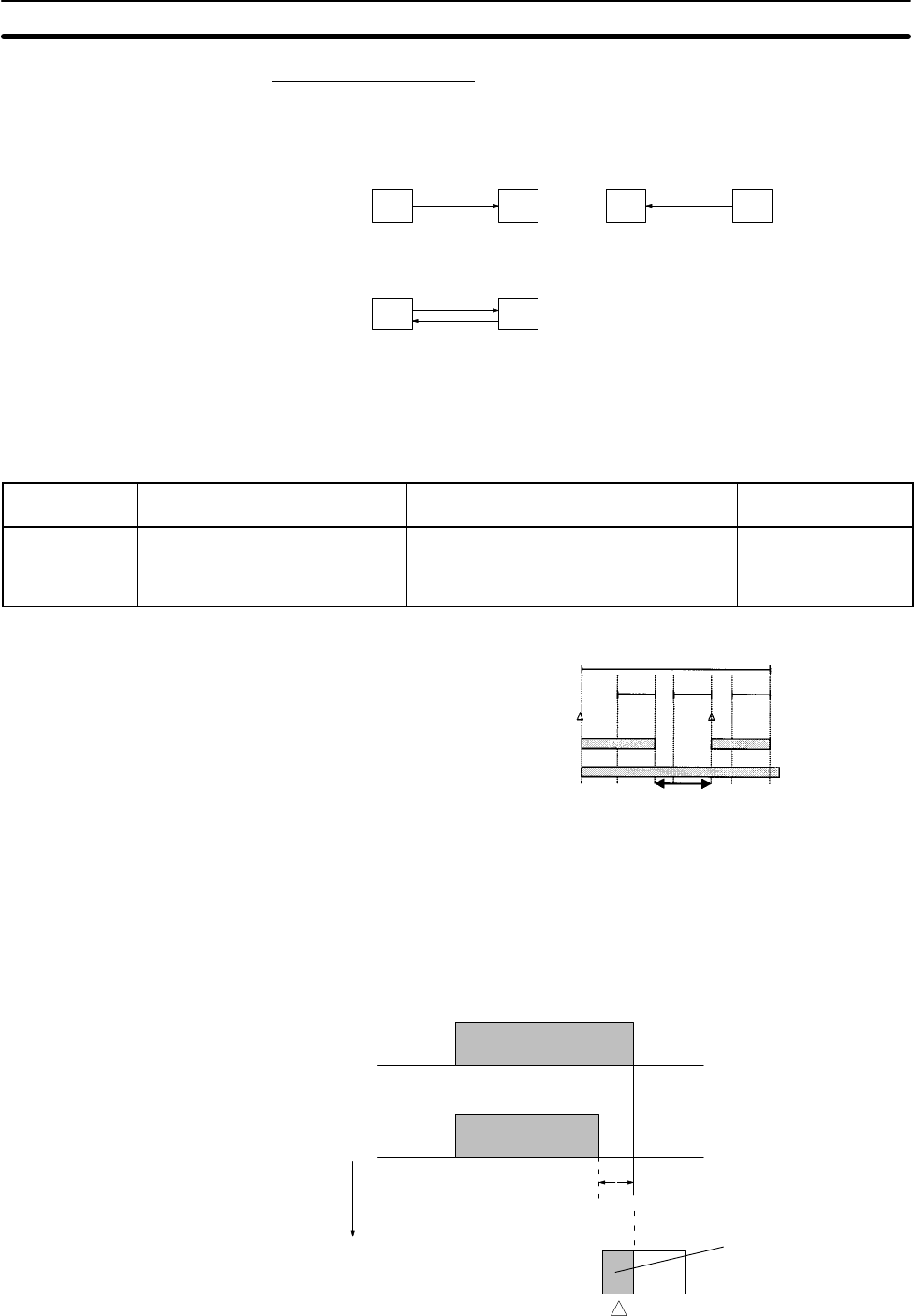
5-7SectionUsing Protocol Macros
91
Transmission Methods
Although the following two transmission methods are commonly used, only half-
duplex transmissions are supported for CQM1H protocol macros.
A B Or A B
Half-duplex: Data can be sent only one direction at a time.
A
B
Full-duplex: Data can be sent in both directions at the same time.
The use of half-duplex transmissions presents some restrictions. Data received
from just before the SEND operation through the end of the SEND operation
cannot be received as receive data for the next RECEIVE operation because the
reception buffer is cleared just before a sequence is executed and at the end of
the SEND operation (i.e., for the SEND and SEND&RECEIVE commands).
Transmission
mode
Reception buffer cleared Data reception Character trace
Half-duplex Just before sequence execution
and at the end of SEND operation
for SEND or SEND&RECEIVE
commands
Between end of SEND operation and end
of RECEIVE operation or between the
end of SEND operation and just before
beginning of next SEND operation
All characters while
tracing is being
performed
An example timing chart for the above situation is shown below.
Sequence execution
Reception buffer cleared
Data received
Character trace
See note 1.
Receive Send Receive
Note 1. Data received before the completion of the SEND operation will be lost, but it
will be included in the character trace.
2. There is a time lag between the completion of data send processing and the
end of the SEND operation. This time lag is time t1 and is shown in the fol-
lowing table. If the response from the external device is too quick, any re-
ceive data entering between the end of sending data for the SEND operation
and the completion of the SEND operation will not be received.
SEND operation
Data send processing
Quick response
Data reception
Time lag (see table)
Data not received here
Reception buffer cleared
t1
